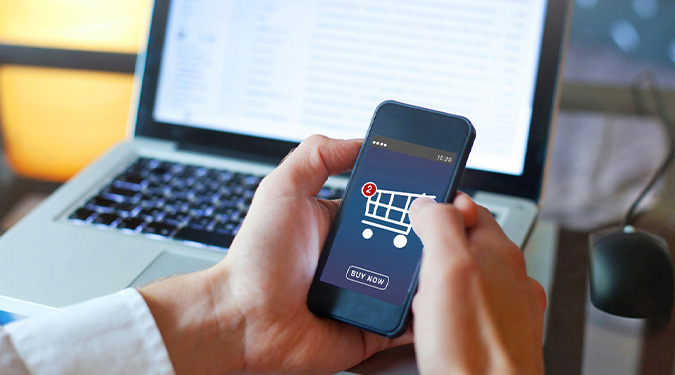Table of Contents
I recently had the opportunity to join Digital Commerce 360’s webinar, “The B2B Digital Playbook: Winning with Strategy, Tech & Fulfillment,” alongside Lori McDonald of Brilliance Business Solutions and Kristina Harrington of GenAlpha Technologies. The session brought together seasoned leaders in B2B to discuss how organizations can navigate today’s rapidly shifting commercial landscape.
There’s no doubt about it: buyer expectations are evolving faster than ever. Digital-native procurement teams are demanding more control, transparency, and speed. And with macroeconomic uncertainty, from tariffs to supply chain constraints, B2B suppliers are under intense pressure to adapt. The path forward? connected commerce.
What Is Connected Commerce? And Why Does It Matter Now?
At TradeCentric, we’ve been using the term “connected commerce” for a few years now, long before it became part of the broader industry vernacular. Simply put, connected commerce is the integration between a buyer’s procurement or spend management system and a supplier’s eCommerce platform or ERP. It’s what enables true end-to-end automation—think PunchOut, PO automation, and invoice reconciliation—all tied together to remove friction and streamline both the buyer’s procure-to-pay and the supplier’s order-to-cash cycles.
And this isn’t just about buzzwords. It’s a response to real-world buyer behavior. Today’s B2B buyers expect seamless, omnichannel purchasing experiences. Suppliers who aren’t meeting them where they buy, which is increasingly through their procurement systems, run the risk of being left behind.
The Opportunity Is Now, But Not Everyone Is Moving Fast Enough
One of the most surprising stats we discussed during the session came from a recent TradeCentric survey: over 33% of suppliers said their customers are requesting integrations—but only a quarter of those companies are actually taking action.
Many still believe they can “throw headcount at the problem” or manage multiple portals for individual customers. I’ve spoken to organizations managing over 60 different buyer portals manually. That’s not scalable and it’s certainly not sustainable.
The companies that are winning in today’s environment are the ones aligning sales, IT, finance, and leadership around a common goal: deliver the digital experience buyers expect. I shared a story during the webinar about a car wash equipment supplier that launched a JAGGAER integration in just two weeks. They didn’t just meet their customer’s expectations. They earned the full account because their competitors couldn’t offer the same connected experience. This success story could apply to any supplier in any industry as long as they have the right tools and partners in place to make it happen.
Reducing Errors and Friction Starts with Integration
When we talk about digital transformation, too often the conversation focuses only on the front end. But the backend matters just as much. If you’re still downloading purchase orders manually, rekeying them into your ERP, or chasing invoice discrepancies, you’re not only wasting time. You’re also introducing risk.
Companies that fully automate the transaction process—from PunchOut to PO to invoice—are seeing a 60–80% reduction in order processing time. That translates into faster cash flow, fewer errors, and better customer relationships.
Flexibility Requires the Right Tech Stack
Of course, enabling connected commerce doesn’t happen in a vacuum. It requires a flexible tech ecosystem. That means having APIs, modern ERP systems, and eCommerce platforms that can support real-time data exchange and automation.
At TradeCentric, we’re platform-agnostic because we understand that every organization is different. Whether you’re composable, headless, or still figuring it out, what matters is that your systems can talk to each other and scale with your business.
Data and AI: The Future Is Already Here
Personalization is no longer a nice-to-have. AI continues to help drive the shopping experiences expected by your customers, from product recommendations and intelligent search to shopping assistants and dynamic pricing.
But B2B procure-to-pay transactions are bigger than the shopping experience. In fact, most of the hidden cost, delays, and friction in B2B are due to the lack of 100%-automated integration between your system and your customers’ procurement system of choice. So it’s critically important to level-up your AI-powered websites with seamless AI-compatible system integrations to drive true ROI.
Final Thoughts
If there’s one thing I hope attendees took away from the webinar, it’s this: connected commerce isn’t just another buzzword or tech project. It’s a business growth initiative. It helps you win deals, retain customers, and future-proof your operations.
I’ve helped launch connected commerce programs at several companies over my 25-year career. Every one of them saw measurable revenue impact, increased buyer loyalty, and improved operational efficiency.
So I’ll leave you with the question I closed the session with: If I told you there’s a digital channel that could drive 20% revenue growth for your business, would you be interested?
Because that’s what connected commerce can deliver, and the time to act is now.
Missed the webinar? The full on-demand replay is available here.




